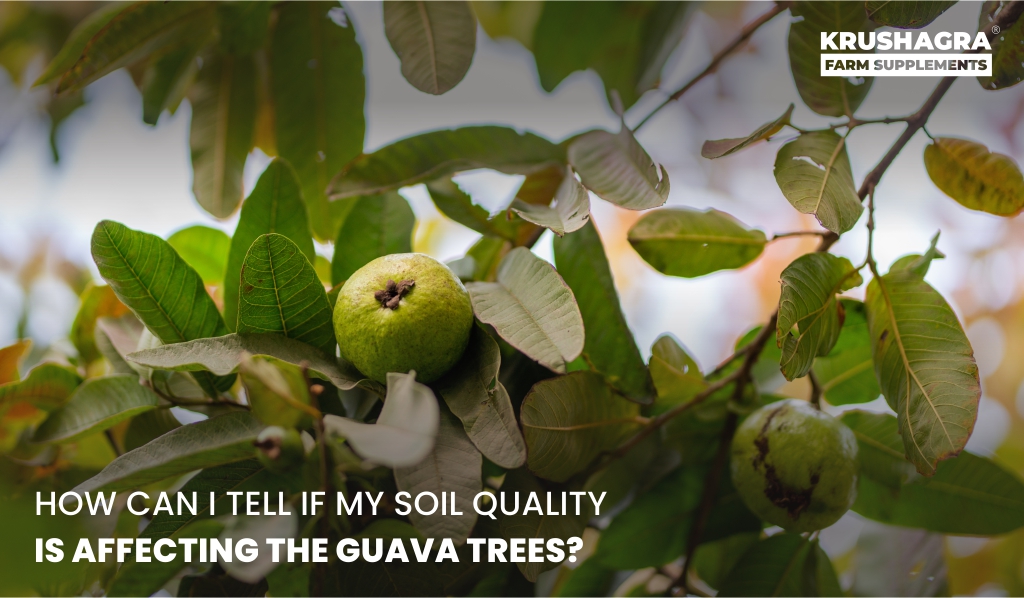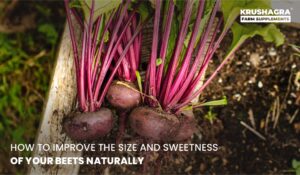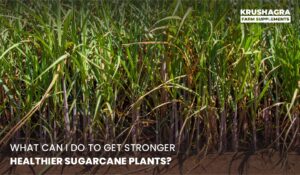Guava trees are hardy, low-maintenance fruit trees known for their delicious fruits and vibrant foliage. However, like all plants, they are heavily influenced by the quality of the soil in which they grow.
Soil quality can significantly impact the health, growth, and fruiting ability of guava trees. Understanding how to evaluate your soil and identify potential issues is essential for ensuring a thriving guava orchard.
Let’s explore the various signs and indicators of poor soil quality and how it may be affecting your guava trees, along with tips to improve the soil for optimal growth.
1. Slow Growth or Stunted Guava Trees
Guava trees are naturally fast-growing when planted in optimal conditions. If you notice that your guava tree’s growth is slow or it appears stunted, it might be due to poor soil quality.
The health of the soil directly affects the availability of nutrients and water to the tree, which are essential for vigorous growth.
Explanation:
Soil deficiencies, such as a lack of essential nutrients like nitrogen, phosphorus, and potassium, can severely limit the tree’s growth. Compacted soil, poor drainage, or an imbalance in soil pH can also hinder root expansion and nutrient uptake.
Pay attention to whether the tree’s canopy is smaller than usual or if its branches are sparse—these are indicators of stunted growth.
Solution:
Conduct a soil test to assess the nutrient levels and pH. Amend the soil with organic matter such as compost or well-rotted manure to boost its fertility.
Aerate compacted soil to improve root penetration and water movement.
2. Yellowing or Discolored Leaves
Healthy guava leaves are vibrant green and shiny, a clear indicator of sufficient nutrient availability. If you notice yellowing or discoloration in the leaves, this might be a sign that the soil is failing to provide essential nutrients to the tree.
Explanation:
Yellowing leaves can occur due to nutrient deficiencies like nitrogen, magnesium, or iron. Poor soil drainage or waterlogging can also lead to oxygen deprivation in the roots, causing leaf discoloration.
Additionally, excessively alkaline or acidic soils can limit nutrient absorption, exacerbating the problem.
Solution:
Use a soil pH test kit to ensure the pH is between 6.0 and 7.5, which is ideal for guava trees. Address nutrient deficiencies by applying a balanced fertilizer or specific nutrients as needed. Ensure proper drainage to prevent waterlogging.
3. Poor Fruit Production or Small-Sized Fruits
One of the most apparent signs that soil quality is affecting your guava tree is poor fruit production or the development of small, underdeveloped fruits.
Fruit production is an energy-intensive process, requiring optimal soil conditions for success.
Explanation:
Inadequate levels of phosphorus and potassium in the soil can result in poor flowering and fruiting. Similarly, over-fertilization with nitrogen can lead to excessive foliage growth at the expense of fruit production.
Soil salinity or toxic substances in the soil may also interfere with fruit development.
Solution:
Focus on adding phosphorus-rich fertilizers, such as bone meal, and potassium supplements like potash to the soil. Avoid over-fertilizing with nitrogen-based products. Regularly flush the soil with water if salinity is an issue, and maintain a consistent watering schedule.
4. Poor Drainage Leading to Root Rot
Guava trees require well-draining soil to thrive. Poor drainage can cause water to accumulate around the roots, leading to root rot and other fungal diseases that can severely damage or kill the tree.
Explanation:
Waterlogged soil prevents oxygen from reaching the roots, creating conditions for root rot and other pathogens to thrive.
Symptoms of root rot include wilting, yellowing leaves, and a general decline in the tree’s vigor. It’s important to identify drainage issues early to prevent irreversible damage.
Solution:
Improve soil drainage by incorporating sand or gravel into the soil mix. Elevate the planting area to create a raised bed or mound, especially in areas with heavy clay soils.
Ensure that irrigation schedules are appropriate and not excessive.
5. Presence of Pests or Diseases
Unhealthy soil can create a weak foundation for your guava tree, making it more susceptible to pests and diseases. Soil quality plays a crucial role in a tree’s ability to defend itself against external threats.
Explanation:
Poor soil quality often leads to nutrient deficiencies, which weaken the tree’s natural defense mechanisms.
Additionally, unhealthy soil may harbor pests like nematodes or fungal pathogens that attack the tree’s roots and other parts. Symptoms may include wilting, leaf drop, and visible signs of infestation or infection.
Solution:
Maintain healthy soil by adding organic matter and beneficial microbes to enhance the tree’s resilience. Use neem-based soil drenches or other natural pesticides to manage pests.
Regularly monitor the tree and the surrounding soil for signs of disease or pest activity.
6. Soil Erosion or Compaction
The physical structure of the soil is just as important as its chemical composition.
Erosion or compaction can drastically reduce the soil’s ability to support healthy guava tree growth by limiting root access to nutrients and water.
Explanation:
Erosion washes away topsoil, which is rich in nutrients, leaving behind poor-quality subsoil. Compacted soil reduces aeration and drainage, causing stress to the roots. Both issues can lead to poor growth, weak fruit production, and vulnerability to diseases.
Solution:
Prevent erosion by planting ground cover crops or mulching around the base of the tree. Regularly loosen compacted soil with a garden fork or aerator. Consider contour planting on slopes to reduce runoff.
7. Soil pH Imbalance
Soil pH determines how well guava trees can absorb nutrients. An imbalance in pH, either too acidic or too alkaline, can lock essential nutrients in the soil, making them unavailable to the tree.
Explanation:
Guava trees prefer a slightly acidic to neutral pH range of 6.0 to 7.5. When the soil is too acidic (below pH 6.0), nutrients like calcium and magnesium may become deficient.
Conversely, alkaline soil (above pH 7.5) can lead to deficiencies in iron, zinc, and manganese.
Solution:
Use a soil pH test kit to check the pH regularly. To correct acidic soil, add agricultural lime. For alkaline soil, incorporate elemental sulfur or organic matter such as peat moss. Regular monitoring and gradual adjustments are key.
8. Unpleasant Soil Texture or Appearance
The texture and appearance of soil can provide valuable insights into its health. Soil that appears too sandy, overly clayey, or laced with debris may not support healthy guava tree growth.
Explanation:
Sandy soil drains quickly but lacks nutrient retention, while clayey soil retains water excessively and may suffocate roots.
Debris or contamination in the soil can introduce toxins or pathogens. Ideal soil for guava trees should be loamy, with good aeration and moderate moisture retention.
Solution:
Amend sandy soil with organic matter to improve nutrient retention. For clayey soil, add sand and compost to enhance drainage and aeration.
Remove any debris or contaminants from the soil. Periodically check for signs of contamination and rectify them promptly.
To Sum It Up
The health and productivity of your guava trees heavily depend on soil quality. By understanding the signs of poor soil and taking proactive measures to address these issues, you can ensure a thriving guava orchard.
Regular soil testing, amending soil with organic matter, and addressing specific deficiencies or structural problems are essential steps in maintaining optimal soil conditions.
With the right care and attention, your guava trees will reward you with lush foliage and abundant, flavorful fruits for years to come.
FAQ’s
1. How often should I test my soil for guava trees?
It’s recommended to test your soil at least once a year, preferably before the growing season, to monitor pH levels and nutrient content.
2. Can guava trees grow in sandy soil?
Yes, guava trees can grow in sandy soil, but it must be amended with organic matter to retain nutrients and moisture for healthy growth.
3. What is the ideal pH range for guava tree soil?
The ideal pH range for guava trees is between 6.0 and 7.5, which allows for optimal nutrient absorption.





